Furbish’s lousewort is kind of like the canary in a coal mine. The question now is, can we help it bounce back?
October 2024
On a warm afternoon, Martin Williams, a plant molecular biology expert with the Canadian Forest Service (CFS), crouches along the banks of the Wolastoq/Saint John River in New Brunswick, searching for a fugitive — or, rather, evidence of one. His target? A small, rare, flowering herbaceous plant with a rather unusual name: Furbish’s lousewort, or Pedicularis furbishiae.
Furbish’s lousewort holds a unique place in Canadian history as one of the first plants to be designated as endangered in 1980. But despite efforts to protect it, its population continues to shrink, with the biggest threat being habitat degradation. These elusive plants are constantly “on the run” — forced to leave unsuitable environments in search of better places to grow — hence their reputation as a fugitive species.
A group effort for survival
Martin is part of a collaborative international recovery team — one that includes the CFS, the Province of New Brunswick, the Canadian Wildlife Service, the University of New Brunswick, the Nature Trust of New Brunswick, Tobique First Nation and the Maine Department of Agriculture, Conservation and Forestry — that is seeking to turn things around so that, one day, Furbish’s lousewort can thrive once more.
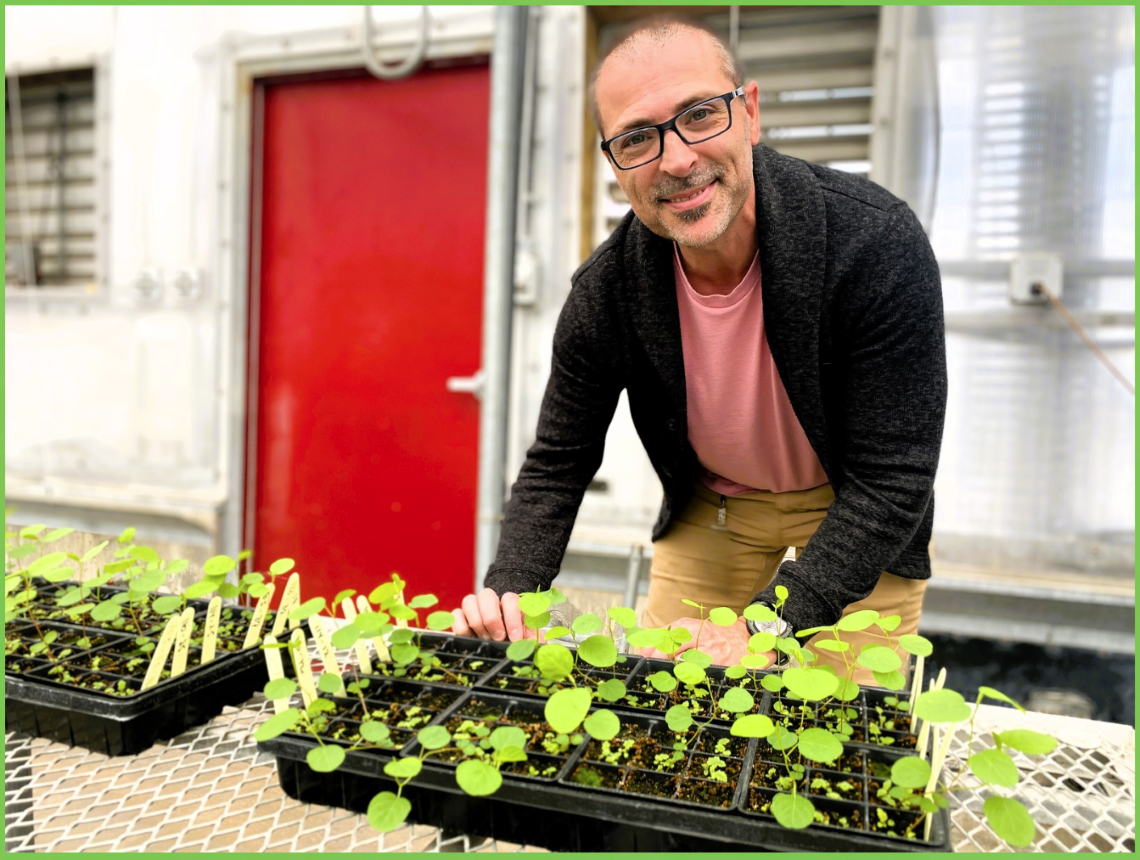
Researcher Martin Williams with a tray of Furbish’s lousewort seedlings and their hosts, the showy tick trefoil, in the greenhouse.
Currently, only 19 sites of Furbish’s lousewort are known: 15 in Maine and four in New Brunswick. Unfortunately, three of the New Brunswick sites are in imminent danger of extirpation, or being wiped out, with fewer than 10 specimens in each. This is a disturbingly sharp decline in their numbers: in 2002, 915 plants were recorded in the province, but by 2024 that number had dropped to just 260.
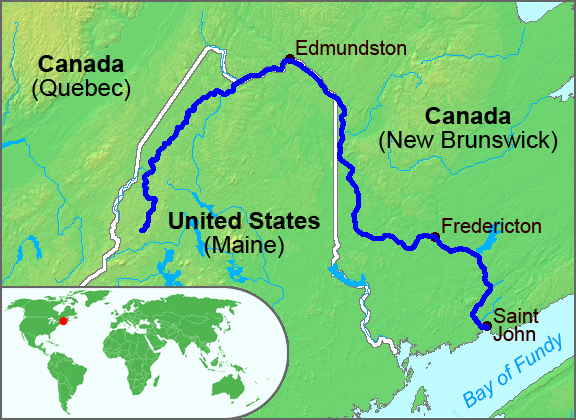
The Wolastoq/Saint John River flows through Maine in the United States and through New Brunswick in Canada. (image: Papayoung at en.wikipedia CC-BY-SA-3.0)
This small, fuzzy, fern-like plant features clusters of yellow flowers and is found only on the banks of the Wolastoq/Saint John River, which flows from northern Maine through New Brunswick and drains into the Atlantic Ocean. Furbish’s battles tough conditions, including erosion, floods, ice scouring and competition from other plants. And these challenges are compounded by the effects of climate change, which is only making survival even more difficult by rapidly shrinking the plant’s already fragile habitat.
Small but important
“Furbish’s lousewort is kind of like the canary in a coal mine,” says Martin. “We’ve altered our environment to the point that this species is getting past the threshold where it’s able to recover. The real question now is, can we help it bounce back and recover?”
To achieve this goal, Martin is focusing on two key approaches. First, he’s evaluating the remaining genetic diversity in New Brunswick and Maine while preserving that diversity through seed cryopreservation — a process that keeps seeds at extremely low temperatures to keep them viable for the long term. The second aspect of the team’s research involves growing plants from the seeds that have been collected and stored in safe, suitable locations called field banks. The aim is to boost the genetic diversity of the seeds, which could then eventually be used for restoration efforts along the river.
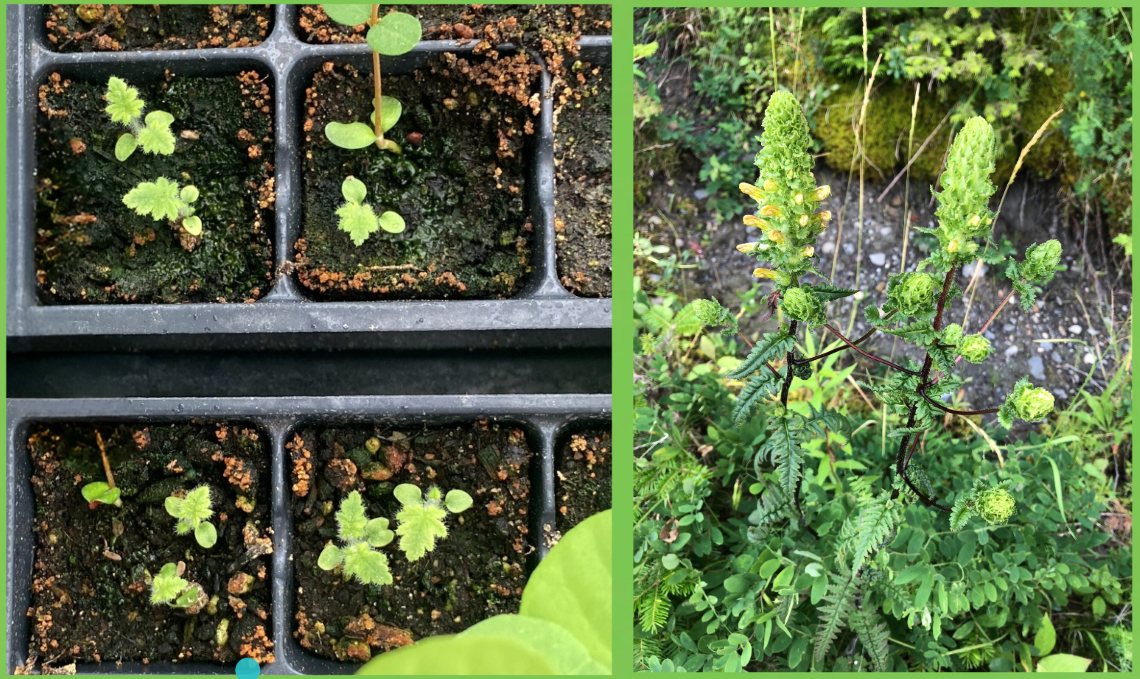
Furbish’s lousewort seedlings in the lab compared with full-grown flowering mature plant in its natural setting.
A closer look at Furbish’s lousewort: Lab, field and greenhouse
Due to the ephemeral nature of the species habitat — which can disappear in a single erosion or ice scouring event — Martin’s team keeps track of the decline of the remaining natural sites. To safeguard the plants, they’ve established two carefully selected field banks, or seed orchards, where living plants can thrive without being threatened by natural disturbances on the river. In the natural locations, he’s hunting for clues as to why the plant’s population is declining. Weather stations keep track of the environmental conditions, while Martin counts the plants, checks for signs of flowering and keeps an eye out for any threats that would lead to the loss of the population.
He remains hopeful, as he searches for answers relating to the changing hydrology of the river, the effects of erosion and other disturbances along the riverbanks. But he’s also realistic: “The dynamic has shifted, and maybe there’s no way to restore balance.”
Fieldwork is just one part of the puzzle. Martin also spends time in the lab, where he conducts genetic analyses, and in the greenhouse, where he grows Furbish’s specimens. It’s a full-circle process, from riverbank, to lab and back again.
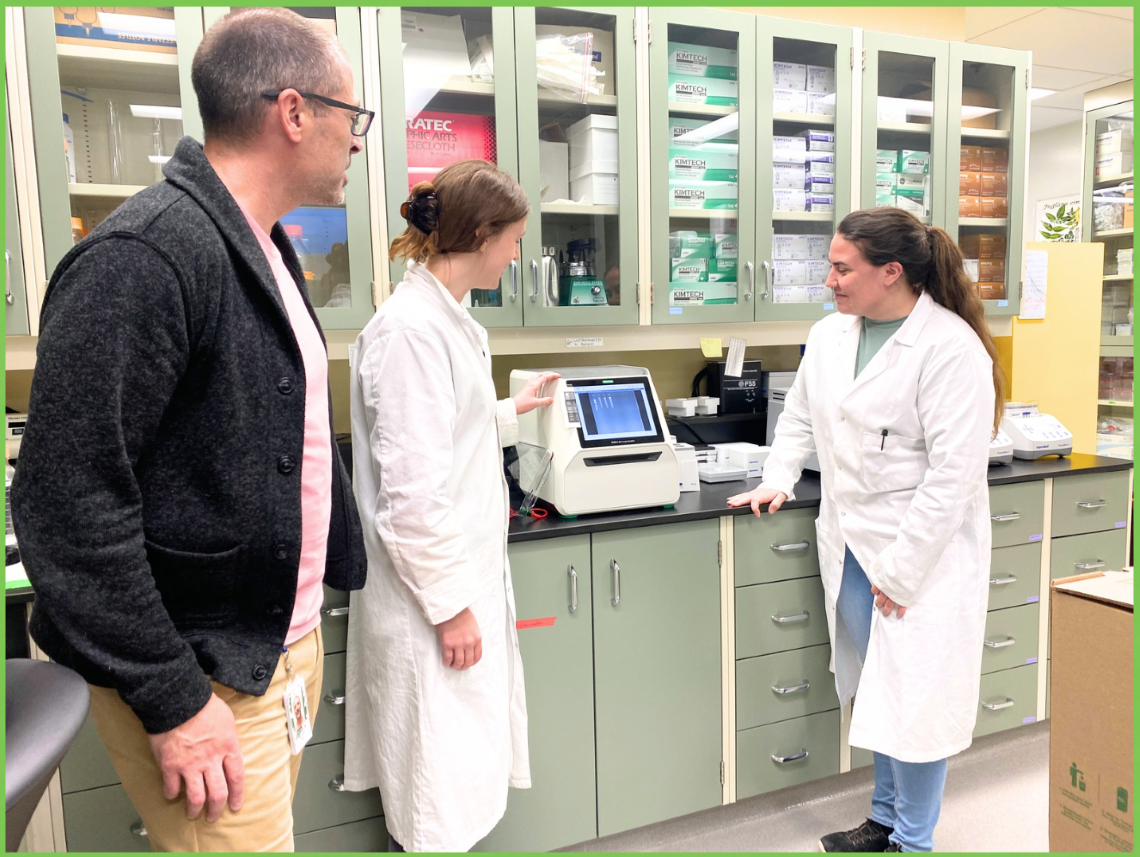
Martin and his team at the Atlantic Forestry Centre study the genetic diversity of Furbish’s lousewort
First stop, Genetics
Like any good detective, Martin starts with the basics: genetics. Using leaf samples collected from various individual plants in each field population, he builds a genetic profile of each plant. He’s interested in understanding the level of genetic diversity that exists at each site and asks two fundamental questions: “Since these populations are fragmented, are there any diversity issues within them?” and “How do the populations in New Brunswick compare to those in Maine?”
At the CFS’s Atlantic Forestry Centre, located in Fredericton, Martin, his small team and other collaborators from the Field Museum in Chicago, Harvard University Herbaria, Université Laval and the Laurentian Forestry Centre, isolate the plant’s DNA and use advanced sequencing technology to search for genetic differences. Their goal is to use this genetic information to help the species recover. One early discovery stands out for its potential importance: due to limited interaction between populations, there’s a high level of inbreeding, which can often lead to impacts on the survivability and resilience of the species.
That’s just one of the challenges. As the number of plants drops, so too does seed production. This makes it hard to maintain the population, let alone increase it. And together with fewer seeds, hope also falls into short supply. This direct co-relation makes it even more critical to boost overall plant count.
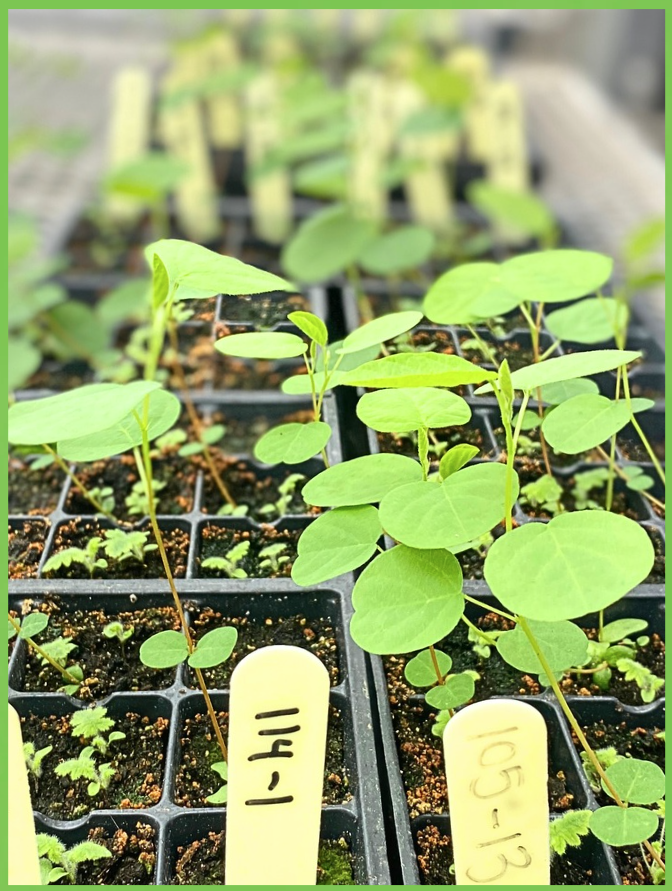
Furbish’s lousewort seedlings numbered and categorized. These ones are paired with a native species called showy tick trefoil, which are the seedlings with the bigger round leaves
The Greenhouse: Nurturing the future
Near the lab is a greenhouse where several studies are underway. Inside, Martin shows off about 30 small, 10-week-old Furbish’s lousewort specimens. This particular experiment is all about growing plants effectively. He’s testing if the species grows better with a host, in this case a native species called showy tick trefoil (Desmodium canadense). Being a hemiparasitic plant, Furbish’s lousewort attaches itself to other plants, through the roots, to gather nutrients from other hosts for its early development. He’s already finding that plants associated with the trefoil are growing faster. He’s trying to figure out whether having a host improves a plant’s chances of survival and if it will flower and produce seed earlier.
The controlled greenhouse environment — with precise watering and fertilization — helps the plants grow stronger than they would in the wild. Martin points to a larger specimen on the floor, already sprouting tiny flowers. “This one is only a year old, and it’s flowering already, which you wouldn’t normally see until year three,” he explains. This rapid development suggests two things: that an improved environment can lead to stronger, healthier plants and that using greenhouse propagated plants could accelerate recovery, since these could potentially be producing seed earlier on sites where they’ve been planted.
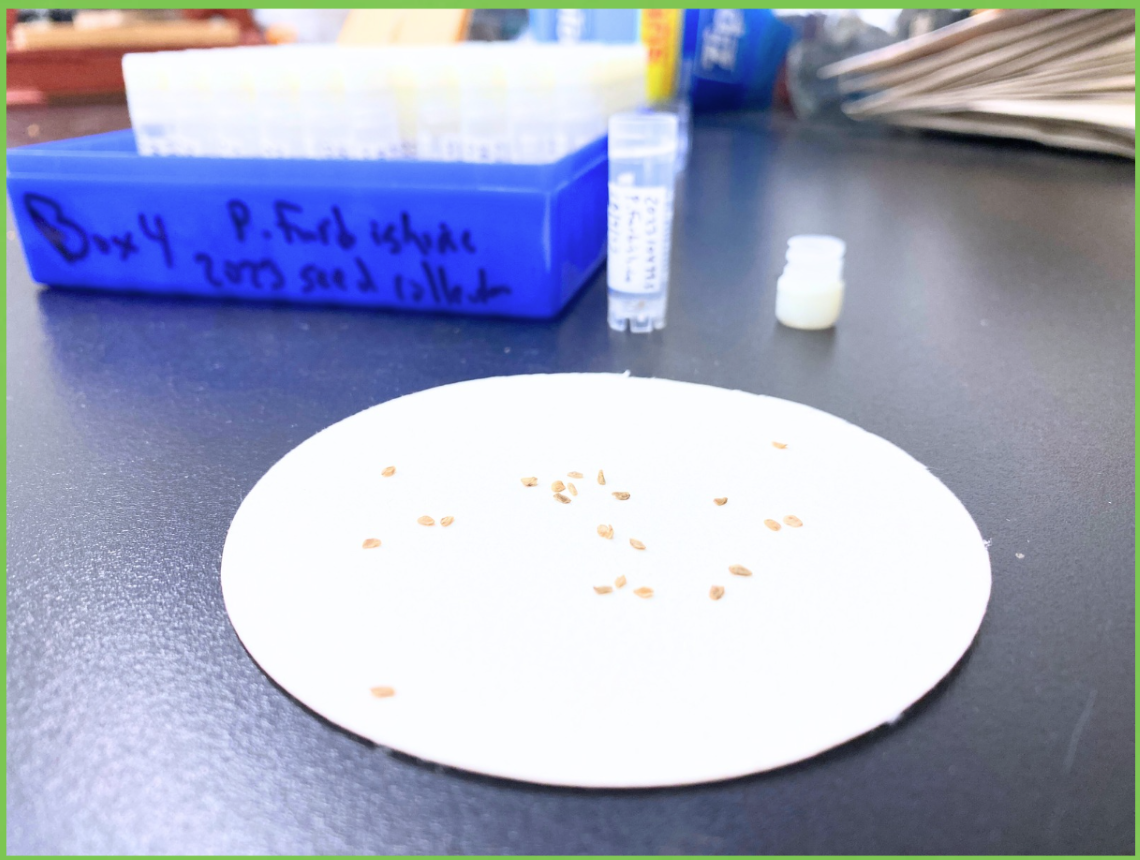
Seeds being prepared for cryogenic preservation in liquid nitrogen at -196°C. Seeds (50) are stored in vials, placed in cryoboxes before storage.
The complete circle, back in the field
From late September through October, Martin is at the field banks again, this time to collect seeds. He brings them to the Atlantic Forestry Centre, where he carefully cleans and evaluates them, discarding any that don’t make the cut. The best seeds are registered with National Tree Seed Centre (NTSC), located at the Centre, and then placed in a cryogenic tank in the basement, where they’re stored in liquid nitrogen at −196°C. This ensures their long-term viability, allowing them to stay dormant until it’s time to produce new seedlings. Currently, 57 seed collections from New Brunswick plants and 70 from Maine are safely stored at the NTSC.
When it’s time to plant the seeds, Martin grows them in the greenhouse until later in the spring, when he’ll take them back to the field banks, where they’ll be safe from river-based threats. By using plants grown from seeds collected from different populations, he and his team can augment the genetic diversity of the seeds produced in the field banks. Once the field-grown plants mature and produce seeds, these will be used for future recovery efforts.
Wider benefits
Progress is being made, and efforts are ongoing to update the recovery strategy, incorporate new knowledge and plan for future conservation efforts. It’s all a great undertaking, and it’s not just about saving this one species. It’s about learning how various factors are impacting our ecosystems and taking steps to be good environmental stewards by giving all species — including Furbish’s — a chance to recover and thrive in their natural habitats.
If you think you have Furbish’s lousewort on your property or want to learn more about this fascinating “fugitive’ plant,” click the links below.
Explore:
More about Martin’s research on ResearchGate
The National Tree Seed Centre – seed collection and preservation